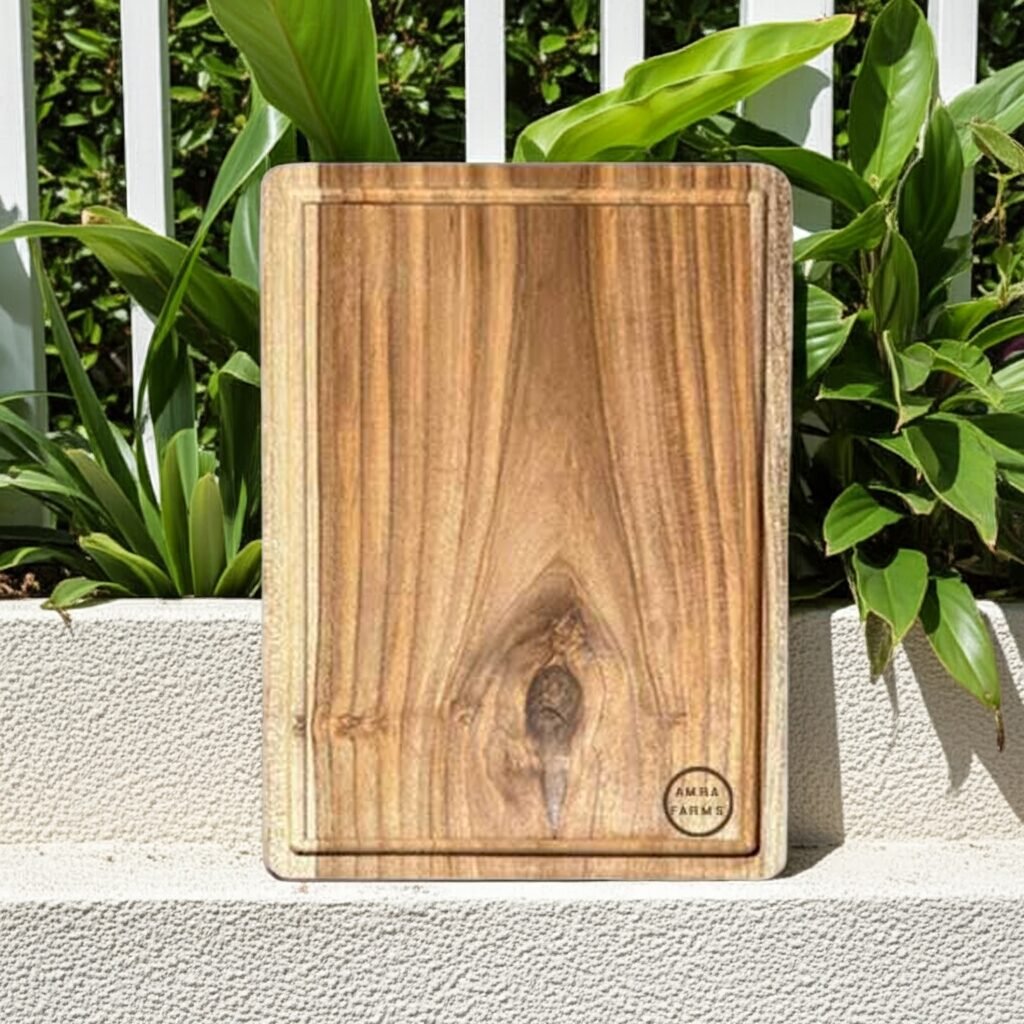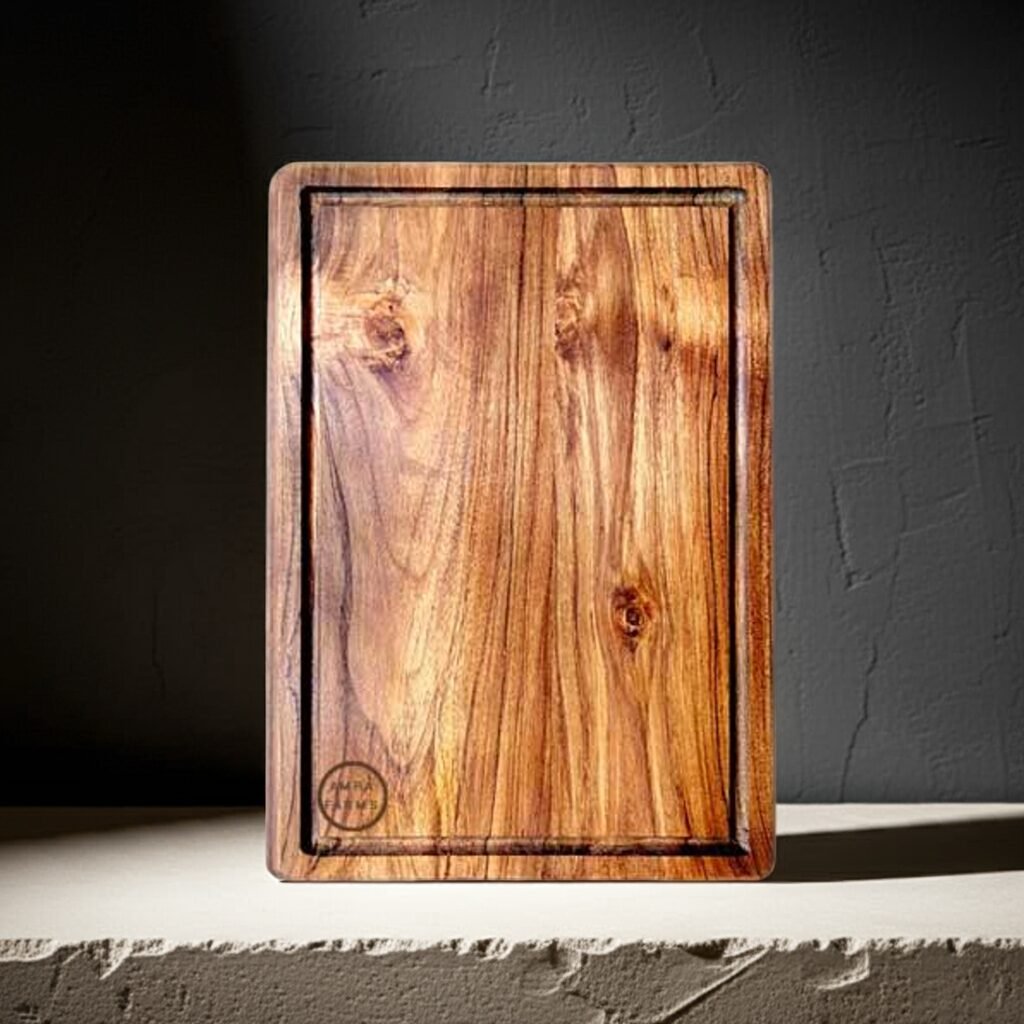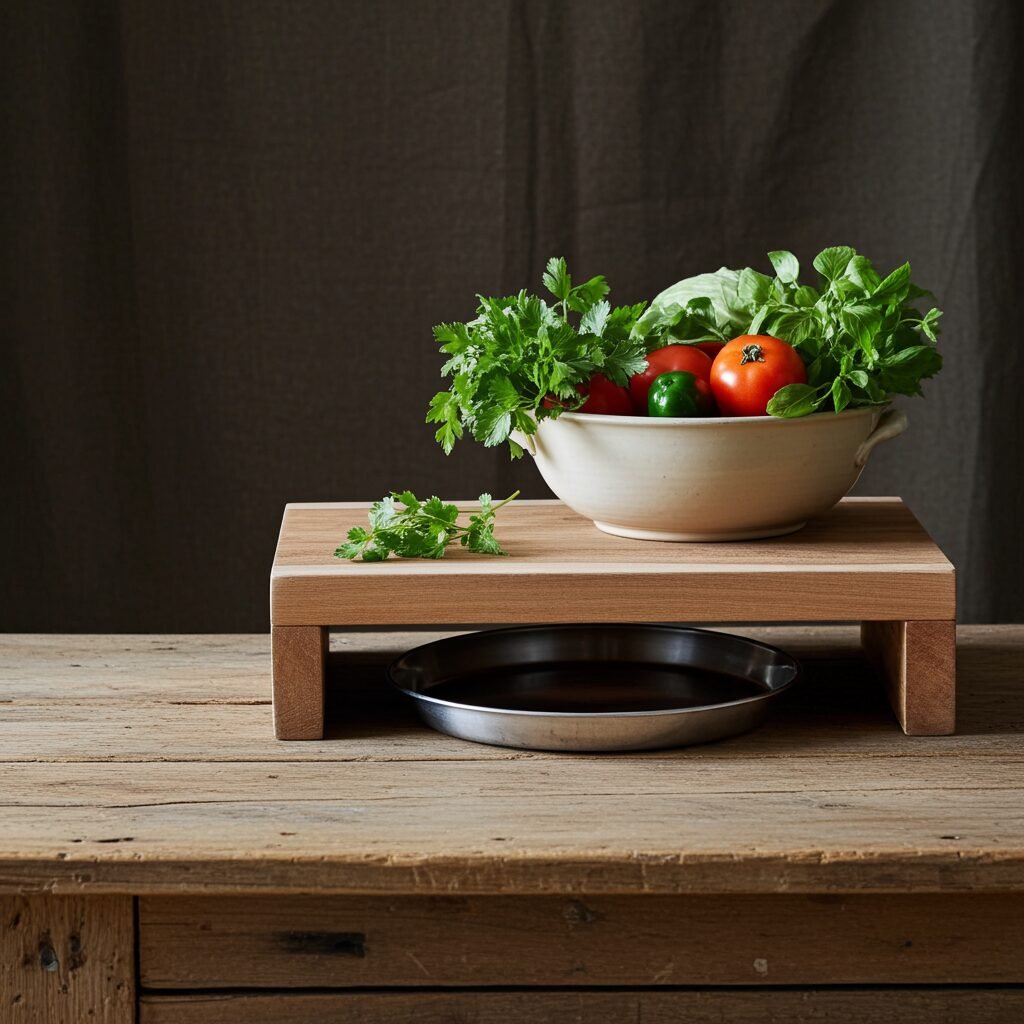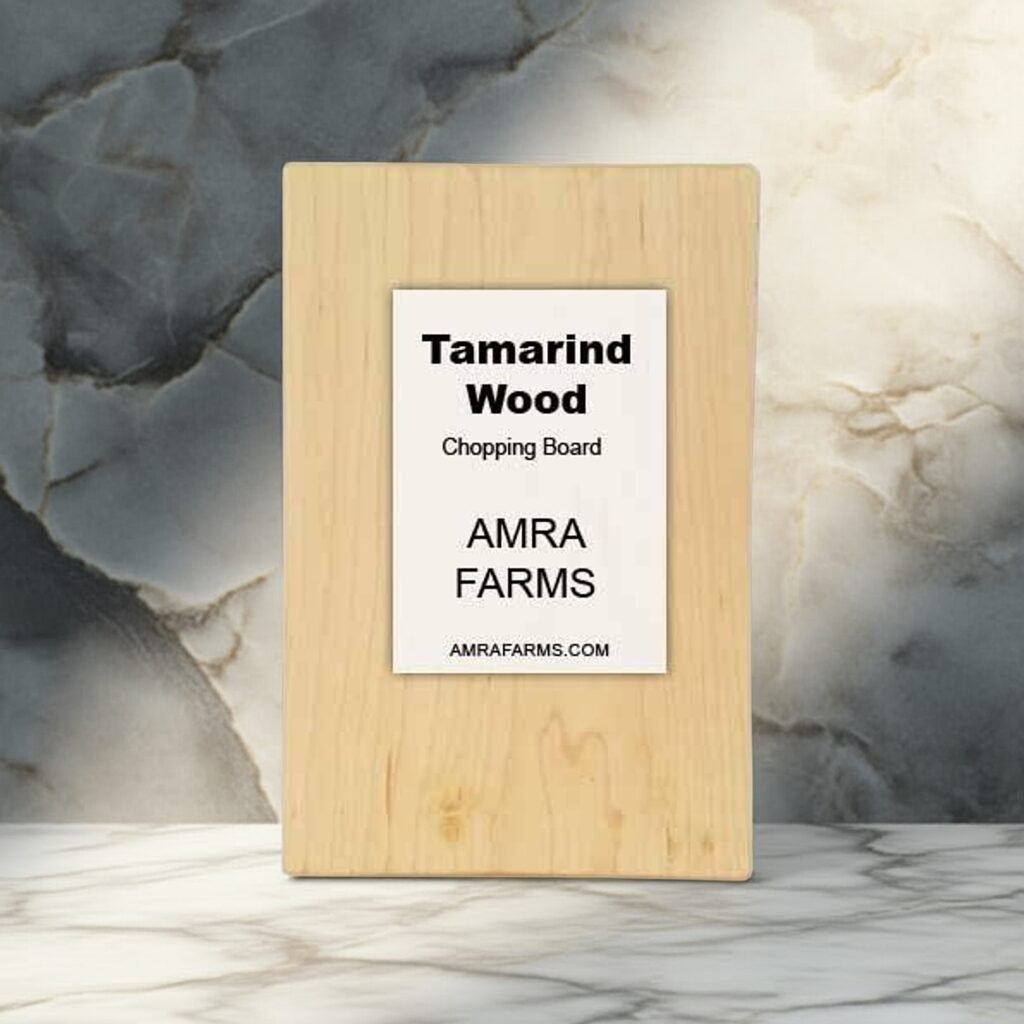Your cart is currently empty!
Choosing the Best Wooden Chopping Board for Your Kitchen
Ever noticed how the right chopping board makes prep work so much smoother? A chopping board is one of the least appreciated kitchen tools in your home. They are taken for granted… until you are faced with a wobbly, scratched, poor-looking, dirty plastic cutting board. A terribly looking board that slides mid-slice or a glass board which dulls your knife and your food is all over the place because the surface is too smooth and slippery! Suddenly you realise how important a cutting board is.
Wooden chopping boards are where every meal begins. From finely chopped onions, juicy steaks, your cutting board is the canvas for your cooking art. A poor-quality board will not just ruin your cooking but will make the food inedible. A board which is full of scratches and looks dirty is not something anyone would want to appreciate. It could harbour bacteria and cause health issues. That’s why choosing the right chopping board is very important and we definitely recommend the wooden chopping boards. Why?






Benefits of choosing a wooden chopping board
Wooden chopping boards are gentle on the knives. Many will debate that plastic is better, but research indicates that wood, specially constructed as an end grain board, is better for your knives.
- Naturally antibacterial: For years, plastic board manufacturers advertised their boards as antibacterial because it was easy to clean. Surprise, wooden boards are naturally antibacterial, self-healing, making bacteria trap and kill them in seconds.
- Durable and long lasting: Plastic boards last a year. Wooden boards last a decade. The difference is pretty obvious. A good wooden cutting board made of teak is going to last 10 good years if maintained well. A mango wood board will last 5.
- Aesthetic appeal: Nothing beats the beauty of a wooden chopping board. The grains of the wood, smooth finish when new and the rustic look on some wood makes wooden boards appealing and even double as a tray!
- Eco-friendly: If you are one of those who prefer eco-friendly products, plastic is definitely the last thing you want on your list. Wood, on the contrary, is a natural, renewable, and sustainable option.
Types of Wooden Chopping Boards
Wooden boards come in different types. The wood is different and so is the construction. Each construction has its own set of pros and cons. The grain orientation plays a major role in performance, durability and aesthetics. Let’s see some of the common constructions of cutting boards.
- End Grain Cutting Board
Think of a butcher block. That’s end grain. The end grain chopping boards are made by fusing short pieces of wood so the ends are facing upwards and form the surface. Essentially, you are cutting through the fibre and not across it. This preserves the knife edges and are best for heavy chopping. So if you are looking for a board to chop meat on, this is the perfect board to use. It also looks good. The designs, though artificial, are various. From simple square surfaces, there are 3D designs in wooden end grain chopping boards which makes them peculiar. The downside: they are expensive and yes, they do contain glues and gums to put the wood together. - Edge Grain Chopping Boards
Edge grain chopping boards are usually far more common. They are boards with multiple planks stuck together to provide a stable surface. They are essentially planks and the grains are facing upwards. They are relatively cheap as they are made from multiple pieces of wood. The grains run lengthwise and provide a durable, slightly harsh surface for the blades compared to end grain. These are the most common boards and best for everyday use. Chopping vegetables, fruits and slicing bread is perfect on these boards. Downside: they are also stuck together. But wait. There is a single block version of end grain chopping boards in the market, making it a bit more expensive but free from toxins and chemicals.
Best Wood Types for Chopping Boards
The problem with wooden chopping boards is not the product itself but the wide range of choices. There is teak, mango wood, tamarind, acacia, neem and 100 other varieties of wood which are available in the market, some of which have no listing of the type or variety of the wood. Making a decision on the type of wood is crucial to ensure not only safety but also durability of your cutting board. Here are some of the most common woods, their benefits and drawbacks.
- Mango Wood Chopping Boards
They are affordable, light, have a stylish rustic grain and are sustainably sourced. If you are looking for a board which is cost-effective and affordable in the wooden product range, a mango wood cutting board is your best choice. Mango wood boards that are joint (made from 2 or more pieces of wood joined together with glue) are often not reliable and safe. When possible, opt for a single block mango wood cutting board. These are more durable and will last 4-5 years with moderate care. Price range could go anywhere from Rs. 500 to Rs. 1000. Some sellers have been known to sell mango wood cutting boards for 2000 and even more. You can definitely find the same product at a much more affordable price unless you want to pay a price for the name tag/brand. - Teak Wood Cutting Boards
These are the best boards you can buy in India. They are durable, tough, extremely food-safe, elegant, beautiful and a lot more. Simply put, if you are looking for the BEST wooden cutting board, we recommend a teak wood cutting board. Apart from the durability, these boards are heavy-duty kitchen accessories. They stand the test of time while looking gracious throughout their use. Teak wood cutting boards cost between 1000 and 1500 for a joint board and 4000 Rs for a single block cutting board. They are definitely a bit expensive but worth a purchase. Most people will not buy more than 1 board in 10 years if you even take 10 minutes to care for the board in a week. - Acacia Cutting Boards
Beautiful, durable and affordable. The dark wood is simply beautiful to look at and that’s the main reason why people actually buy it. They are relatively durable but require care. The wood is prone to cracking over a period of time. Look for a board which is at least 1 inch thick or your boards won’t last more than a year. Do not expose the board to direct sunlight for prolonged periods and beware of soaking the board. These boards cost from 800 Rs to 1200 for a standard size. - Bamboo Cutting Boards
Technically, bamboo is a grass and not a wood. But nevertheless, everyone wants to put it in the wood category. Bamboo is sustainable, eco-friendly, hard and tough. They are budget-friendly and easily available. Bamboo boards can be tough on your knives but that’s actually not the biggest drawback. If you see the construction of a bamboo wood cutting board, you will realise that 90% of the boards are not hygienic and manufactured using glues and chemicals which may create health hazards in the long run. Bamboo boards are cheap and cost anywhere between 300 and 500 Rs for a standard size.
What to Consider Before Buying
When purchasing a wooden cutting board, there is a lot more to consider than just the price and material. Thickness and size matter. While most people do know the size they want to purchase, they overlook the thickness. Thick boards are often heavy and harder to handle in a kitchen but the heavier the board, the more durable it is.
Heavier boards do not crack or warp easily. They stand the test of time and will last more than a thin board. Another factor to consider is the juice grooves. This may be a feature which most people don’t care about, but I recommend a board with a juice groove, especially if you don’t want to mess up your countertop every time you cut tomatoes.
Reversible designs are good to have, but then most wooden boards are generally reversible unless you have attached rubber feet. Rubber feet on a cutting board prevent slipping of the board while you cut, but most heavy-duty cutting boards like teak don’t require rubber feet as they hold well with their own weight.
If you are one of those few who are lazy to maintain your board, we recommend a teak wood cutting board. Most other boards require more effort in maintenance and care. Also, teak is the safest wood for food with its antibacterial features.
Categories
Products
- Buy Wooden Vegetable Cutting Boards Online
- Wooden Kitchen Accessories Tools
- Buy Butcher Block & Meat Cutting Boards Online
- Buy Premium Edge Grain Single Block Wooden Chopping Boards Online
- Buy The Best Teak Wood Chopping Boards Online In India
- Buy Wooden Cutting Boards With Handle For Kitchen
- Mango Wood Chopping Boards
- Single Block Chopping Boards
- Tamarind Wood Chopping Boards
- Wooden Platter Boards , Pizza Platters & Charcuterie Boards
Tamarind Wood Cutting Board Teak Wood Cutting board
